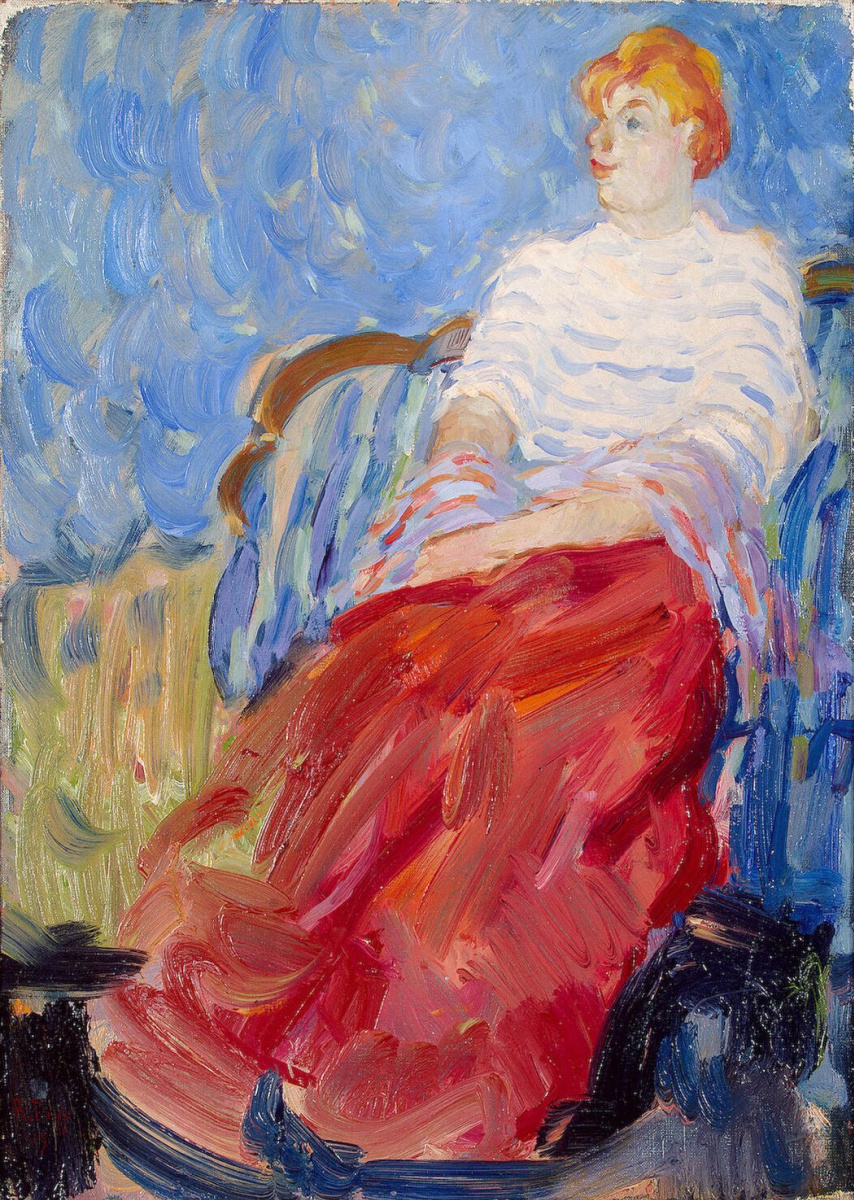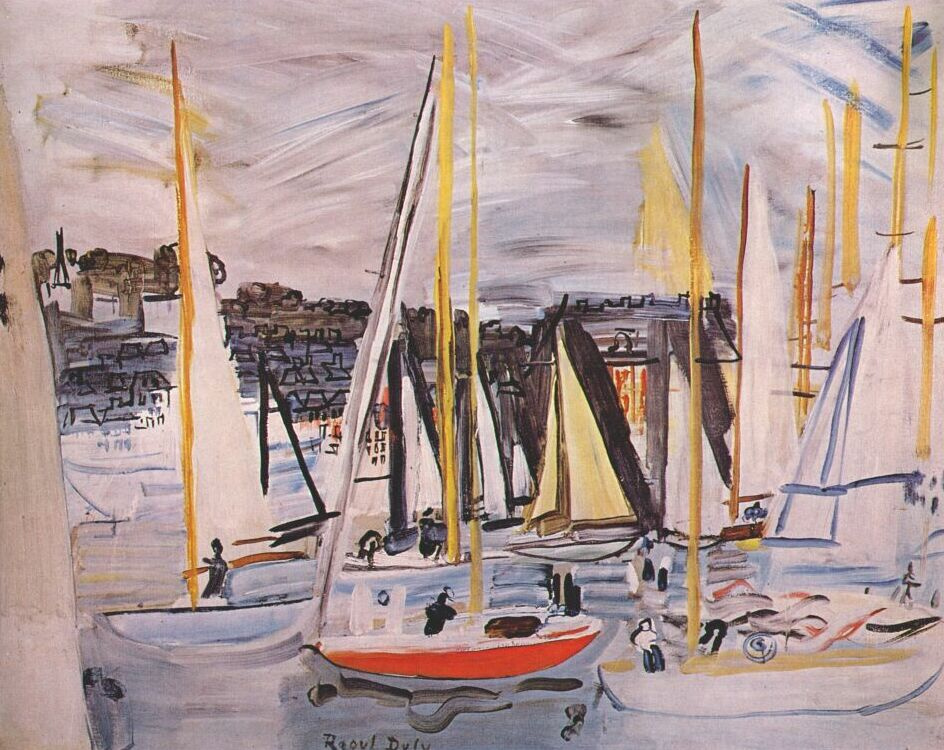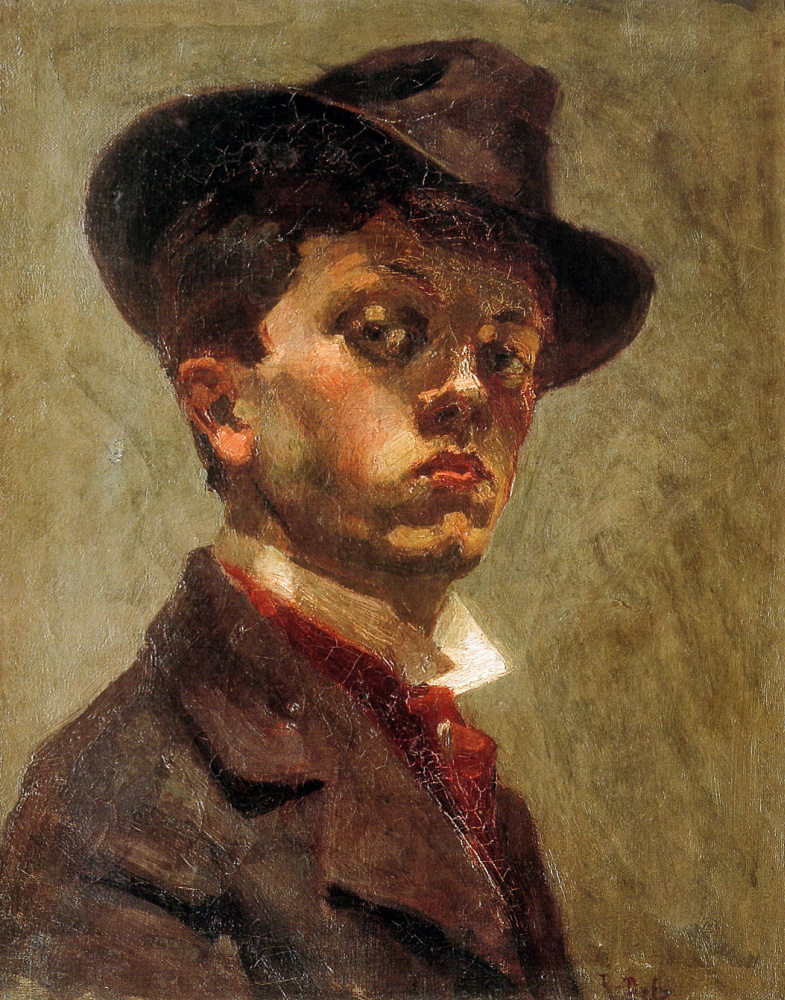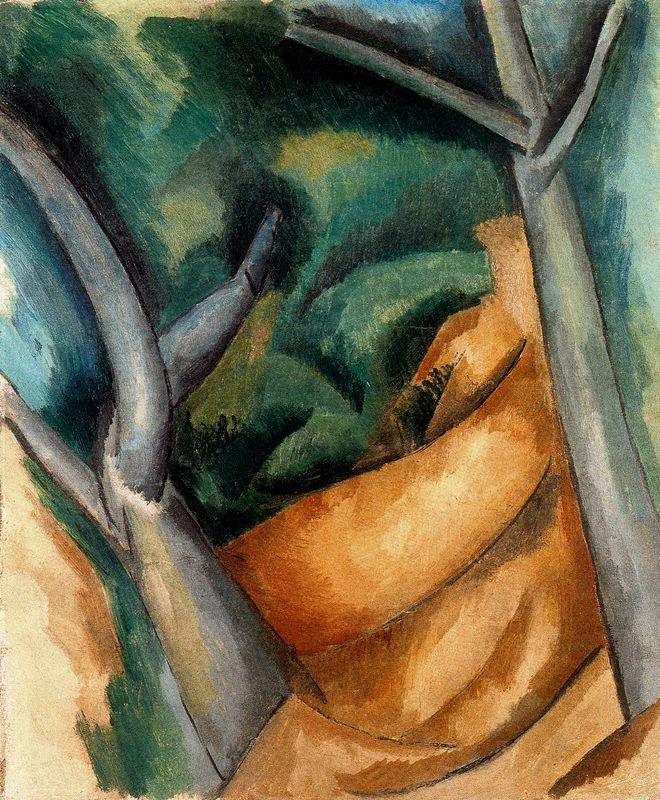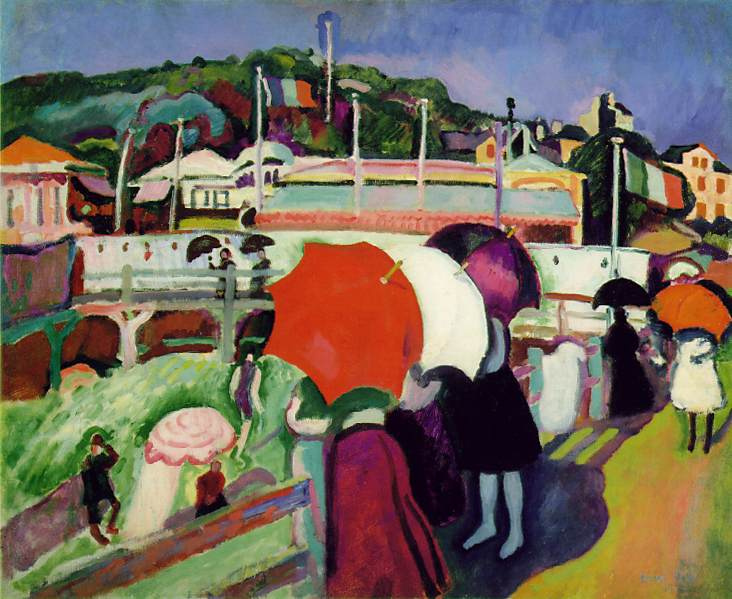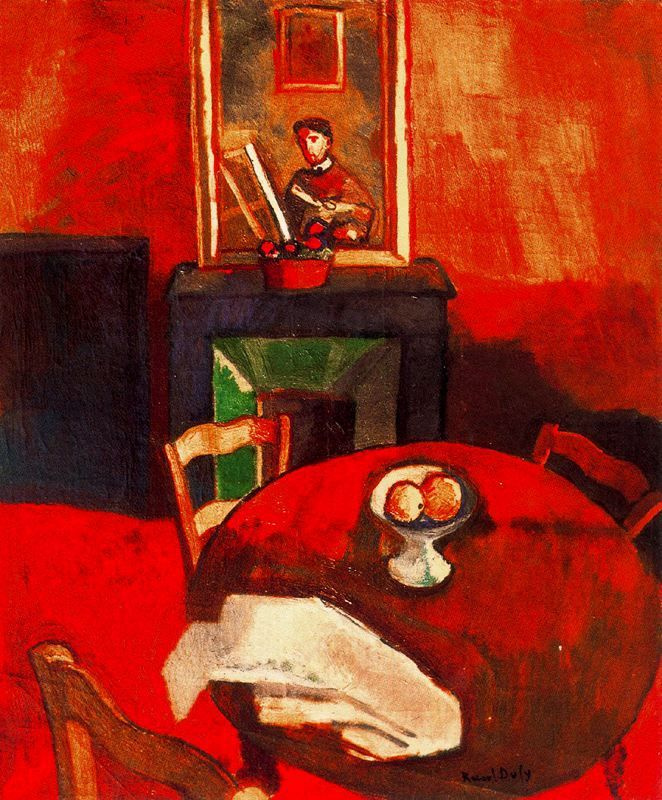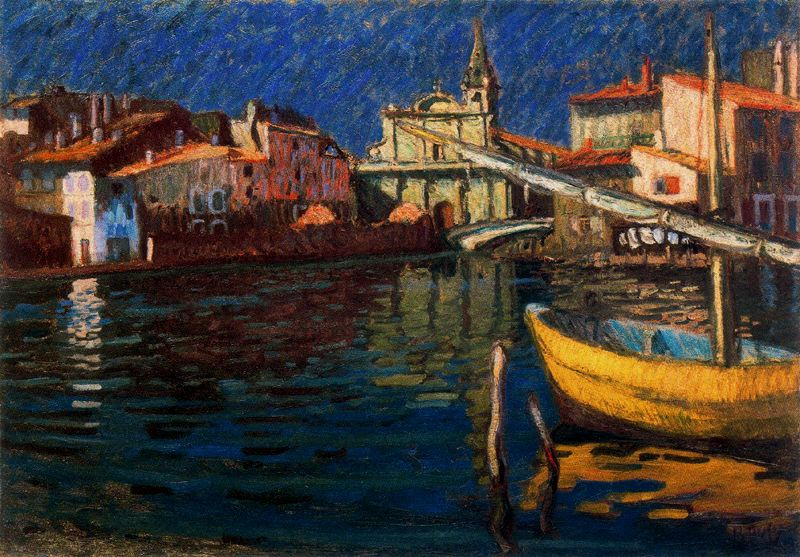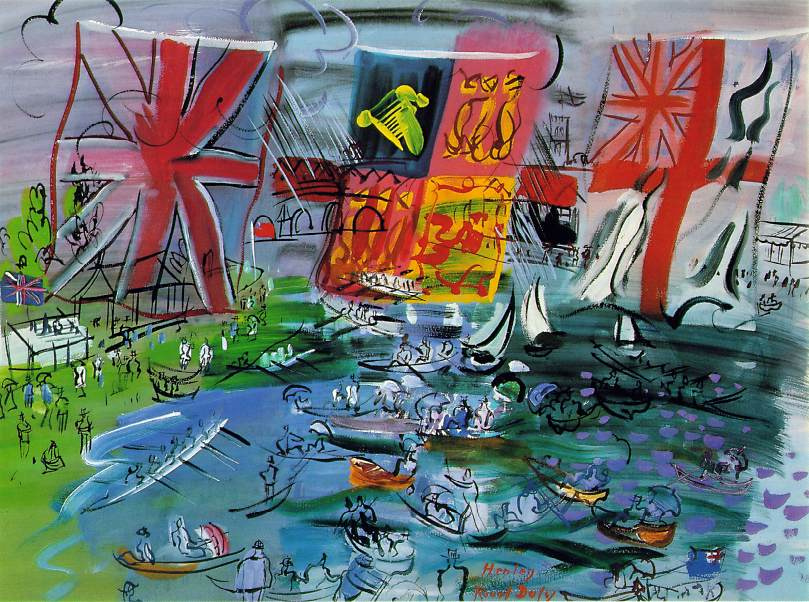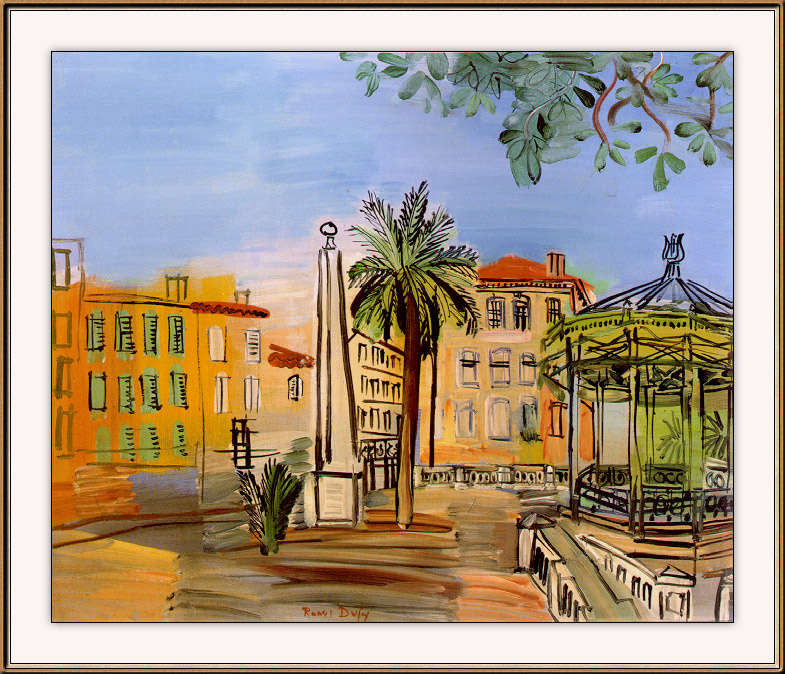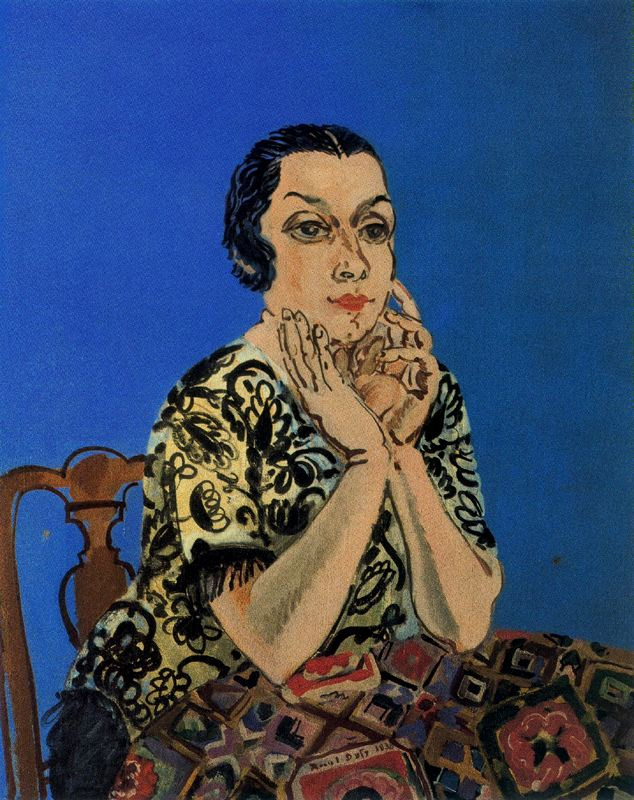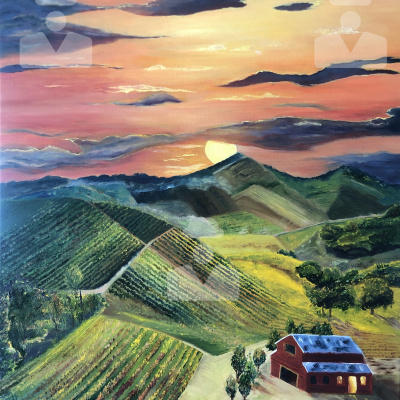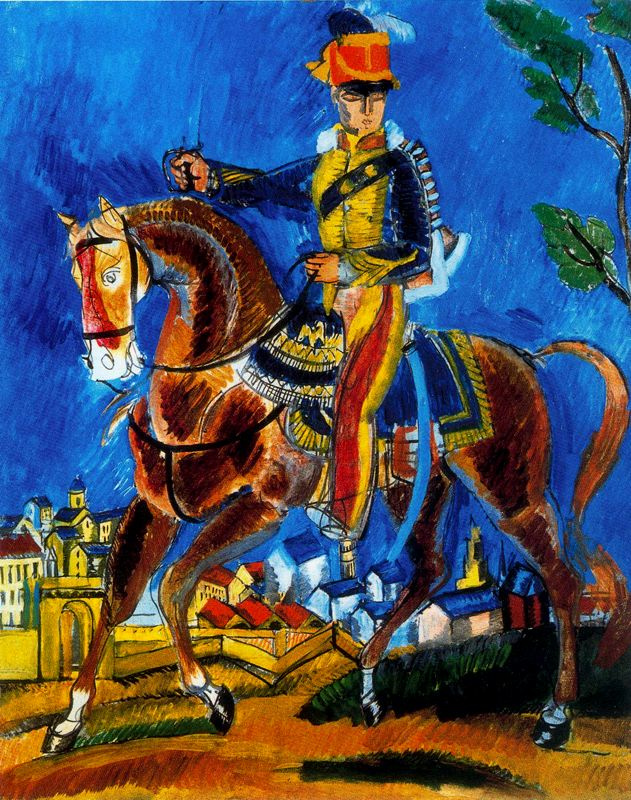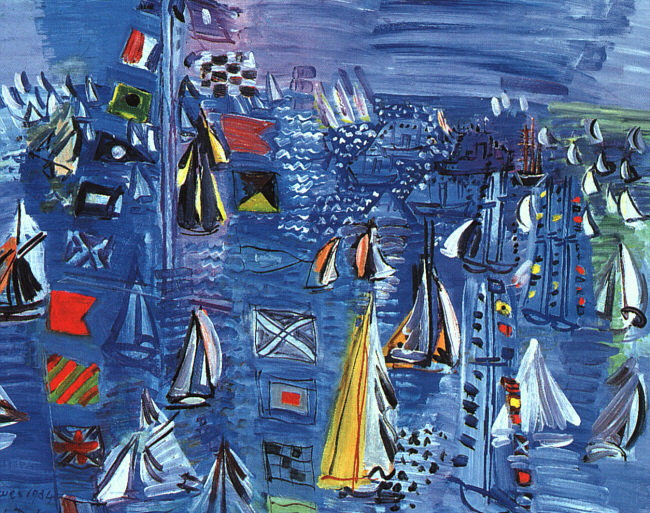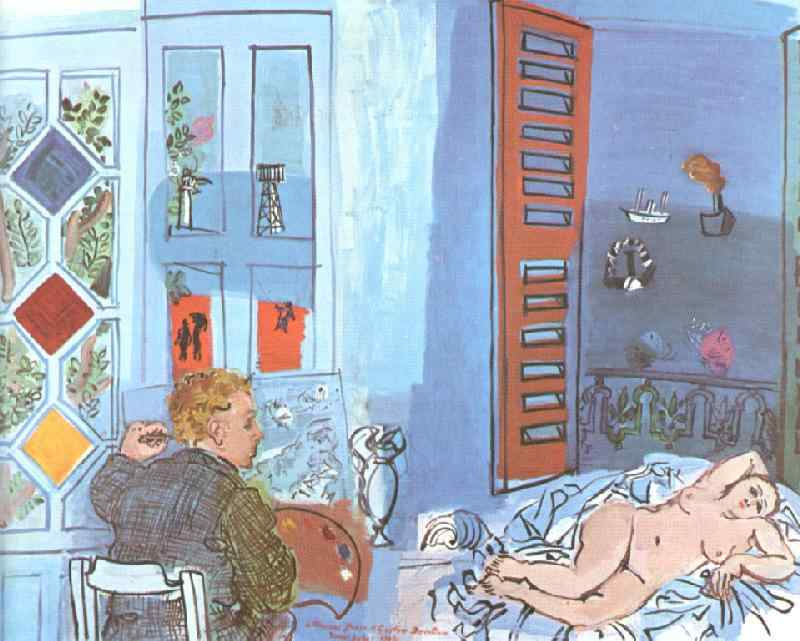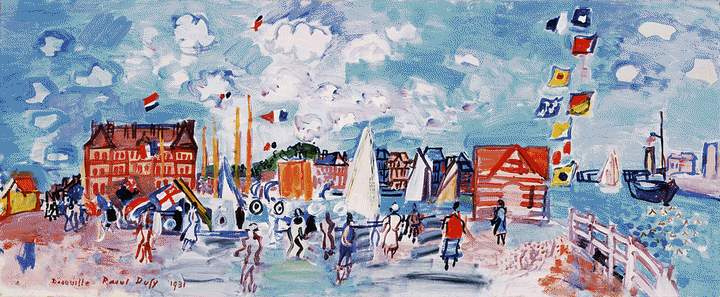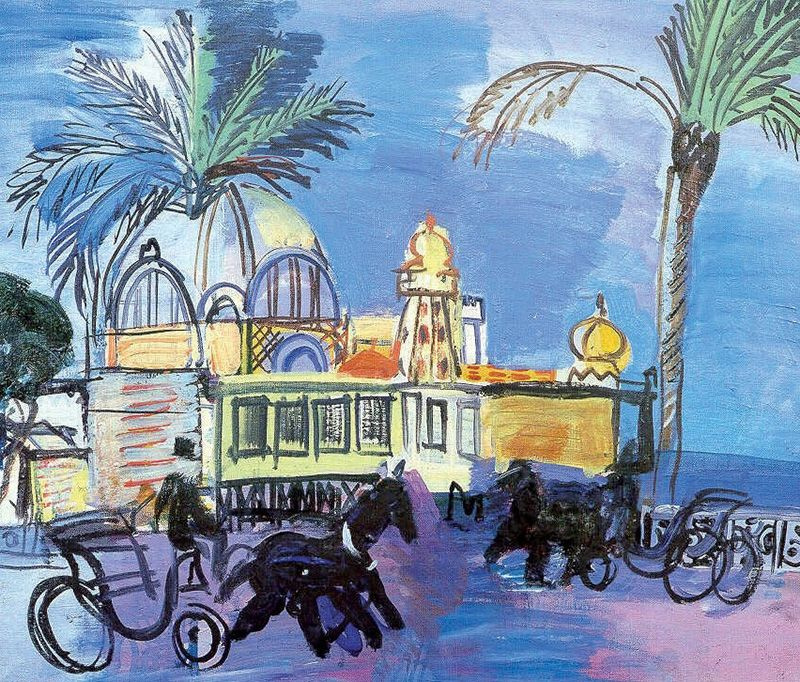He avoided gloomy colors and serious subjects in his paintings, but the public did not immediately accept his style. His canvases did not arouse interest, but the same drawings transferred to silk were adored by women of fashion, so the artist abandoned painting for a while. Here are a dozen facts about the life and work of Raoul Dufy.
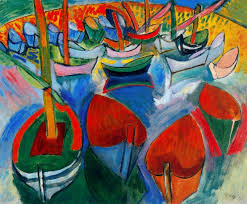
Fact 1: Raoul Dufy grew up in a creative family
Raoul Dufy was born in Le Havre in 1877 and was the eldest of nine children (he had three brothers and five sisters). The family wasn’t wealthy, but the spirit of creativity reigned in the house. The father, who worked in the factory, was also a choirmaster and organist at a local church. He encouraged children to study music and painting, as a result, two of his sons became artists (Raoul and Jean), another son became an organist, and the other one a flutist and publisher of a music magazine. The latter, by the way, taught Georges Braque, the founder of Cubism, friend and classmate of Raoul Dufy, how to play the flute.From the age of fourteen, Raoul himself worked in a company that imported coffee, and at the same time studied at an art school. The prosaic work of a clerk, in addition to his daily bread, gave Dufy food for observation and creativity: the office windows overlooked the port, and the young man painted the sea and ships, loaders and sailors.
Fact 2: Dufy was lucky with teachers
Raoul Dufy’s mentor at the art school in Le Havre was Charles Louyer, who once studied under Alexandre Cabanel and was tolerant of the creative pursuits of his students. Later, after serving in the army, Raoul Dufy went to Paris, where he began to study under the famous portraitist Leon Bonn.Fact 3: Dufy developed his own style
…after he "underwent" several other styles. At first he imitated the Impressionists, then he followed the Fauves (bright pure colours, sharp contours, expression). There was also a period of Cubism in his work.But in the end, Raoul Dufy developed an individual style. He began to paint landscapes, still lifes and genre compositions, not paying too much attention to perspective. With quick strokes, Dufy applied transparent spots of liquid paint, and over this colour base he applied light curvy lines that indicated objects and figures.
The Henley Regatta
1933, 65.5×49.5 cm
This painting style is called stenographic.
Fact 4: Dufy left painting for the sake of design for a while
In the 1900s (at the time of his passion for Cubism and Fauvism), Raoul Dufy began to illustrate books, was keen on woodcut and drawings for dress and decorative fabrics, because he couldn’t sell his paintings.Dufy’s drawings, reproduced on silks and tapestries, carpets and furniture tapestries, brought him more success and money than what he painted on canvas and paper. In 1912, Raoul Dufy became a staff artist for the Bianchini Férier textile company. For a while, he completely stopped painting. Subsequently, Dufy "cheated" on painting not only with textile design. He also worked with ceramics, made theatrical scenery.

The Allies. Drawing by Raoul Dufy on a handkerchief produced by Bianchini Férier. 1915.
Source: wikimedia
Source: wikimedia
Fact 5: Dufy collaborated with fashion designer Paul Poiret
The leading French couturier of the early twentieth century, Paul Poiret, helped to realize the talents of Raoul Dufy. Each of them made their own revolution: Dufy in the field of textile design, Poiret in the world of fashion. Dufy broke the tradition of multi-colour prints and came up with ornaments using only two or three colours. In turn, Poiret abandoned the usual silhouettes and forms. One of the striking examples of their creative tandem is the Persia coat, which became the hit of the 1911 season. Paul Poiret created it of fabric with a two-tone print by Dufy: large beige leaves and flowers on a dark background.
Raoul Dufy and Paul Poiret. Persia coat. 1911. Photo Source
The artist’s collaboration with Paul Poiret was fruitful and varied. Commissioned by the fashion designer, Dufy designed Poiret’s branded stationery. Together they organized the Petite Usine studio, where Dufy experimented with printing on fabrics. He also became a decorator of the grandiose costume ball, The Thousand and Second Night, which Poiret gave in June 1911.
Portrait of a woman
1930
"Dufy believed that blue was the only colour that was capable of retaining individuality in any environment…
…In 1910, Raoul Dufy married Eugénie Brisson. The girl originated from Nice. She worked in a haberdashery shop in Le Havre, where they met…" — biographical sketch of the artist in Arthive
…In 1910, Raoul Dufy married Eugénie Brisson. The girl originated from Nice. She worked in a haberdashery shop in Le Havre, where they met…" — biographical sketch of the artist in Arthive
Fact 6: Dufy “stole a march” on Picasso
Paul Poiret introduced Dufy to Guillaume Apollinaire. At that time, the poet was going to publish a new collection of poems and ordered illustrations by Pablo Picasso. However, Picasso did not start work for a long time, and Apollinaire’s "The Bestiary or the Procession of Orpheus" was eventually illustrated by Dufy. He created three dozen square engravings for the book, most of them are images of animals, birds and fish.
Engravings by Raoul Dufy from the Bestiary. Illustration source — bersoantik.com
Later, Bianchini Férier produced a series of patterned fabrics in which Dufy cited his own engravings from the Bestiary. These were silk fabrics with ornaments, such as Seahorses and Shells, Turtle, Pegasus, Tibetan Goat, etc.
Fact 7: Dufy is the singer of lightness and joy
By the early 1920s, Dufy’s original artistic style was finally formed. He finds his theme and depicts the bright and major side of life: beach holidays and horse races, views of the Riviera and musical evenings, floral still lifes and seascapes. Finally, recognition and fame come to the artist. He successfully exhibits in Prague, Zurich, New York.In 1926, Raoul Dufy becomes a Knight Commander of the Legion of Honour.

Raoul Dufy. Photo from Cahiers d’art (monthly art newsletter). 1927. National Library of France. Source: 360wiki
Fact 8: Dufy is the author of the unique panel, The Electricity Fairy
Accompanied by his brother Jean, iIn 1936—1937 Raoul Dufy created a giant panel, The Electricity Fairy, for the pavilion of the state electric company at the World Exhibition in Paris. In the 600 sq. m composition, the artist depicted the course of history from the first observations of electricity to the latest technical advances, and also captured more than a hundred great scientists and thinkers.
Raoul Dufy. The Electricity Fairy. 1936—1937. Musée d’Art Moderne, Paris Photo by Guillaume Baviere. Source: wikimedia
This work became groundbreaking. The sketch
of the painting was re-shot on photographic plates, and then projected onto the wall. In addition, Dufy used pigments and solvents specially developed by the director of the Louvre technical laboratory, Jacques Maroget. As a studio for the creation of such a large-scale work, the dead turbine room of an old power plant was used.
In 1964, the electrical company donated the panel to the Paris Museum of Modern Art. In 2020, The Electricity Fairy was restored within the months when the museum was closed due to the coronavirus pandemic.
In 1964, the electrical company donated the panel to the Paris Museum of Modern Art. In 2020, The Electricity Fairy was restored within the months when the museum was closed due to the coronavirus pandemic.
Fact 9: The artist was not a supporter of healthy lifestyle
"Dufy was a heavy smoker and wine lover," wrote Andrew Weill in his book, Common Sense and Medicine (more on this below). According to the author, it was these addictions that triggered the development of rheumatoid arthritis in Dufy. The first signs of a serious illness began to appear in the late 1930s.The disease progressed and by the end of the 1940s, almost crippled Dufy. He worked with great difficulty, often painted with his left hand, tying a brush to his hand, as did Renoir, who also suffered from arthritis. The then traditional treatment with gold salts did not work, and in the end Dufy found himself in a wheelchair.

Raoul Dufy in his studio. Source — kolybanov.livejournal.com
Fact 10: Dufy dedicated a painting to a medicine
In 1949, American physician Freddie Homburger learned about Dufy’s disease from a publication in Life magazine. Homburger invited the artist to take part in a study of the effects of cortisone on inflammation; Dufy agreed, and in April 1950 he arrived at a Boston clinic.Experimental hormonal treatments have shown rapid improvement. Very soon Raoul Dufy got to his feet, was able to walk and began to devote two or three hours a day to painting.
Returning to work, Dufy painted the Cortisone painting, which he presented to the pharmaceutical company, the developer of the drug.
Fact 11: Dufy the patient served science
The renowned American physician and author of many controversial popular science writings, Andrew Weill, in his book Common Sense and Medicines, mentions the history of Dufy’s treatment. He writes that cortisone therapy continued despite serious side effects, and believes that the intestinal bleeding from which the artist died was most likely the result of continuous three years of cortisone and aspirin treatment.One way or another, Raoul Dufy died in France at the age of 77, while he worked until the end of his days. When the artist died, an unfinished painting remained on the easel.

Raoul Dufy. Source — thesketchline.com
Today, steroid therapy in the treatment of rheumatoid arthritis is considered a temporary measure, and not a cure, as was originally thought. We can say that Raoul Dufy, who agreed to participate in the study
of the drug, served science.
Fact 12: Dufy gave his last prize to the young
In 1952, shortly before his death, Raoul Dufy received the Grand Prix at the 26th Venice Art Biennale. He gave this prize to young artists. Perhaps, making this gesture, the artist remembered how, at the age of 23, he was able to go to study in Paris, when he received a scholarship from the municipality of Le Havre.
Girl making a copy of a painting by Raoul Dufy. Musée d’Art Moderne, Paris 2015. Photo by Groume. Source: wikmedia
Dufy’s works are in museum collections and private collections today; they still bring joy to the audience. In addition, the artist’s works inspire contemporary couturiers. So, watching the fashion shows, take a closer look, and you will more than once recognize the pure colours and magical drawings by Raoul Dufy.






